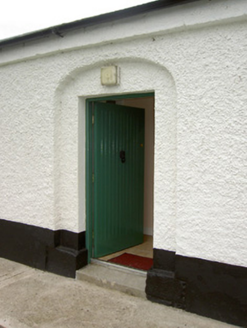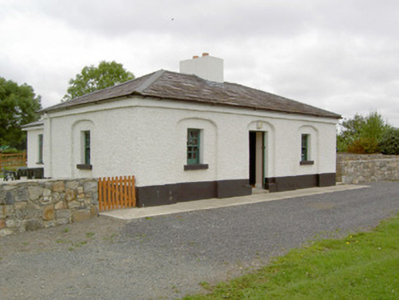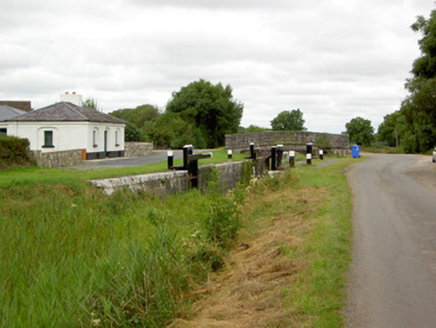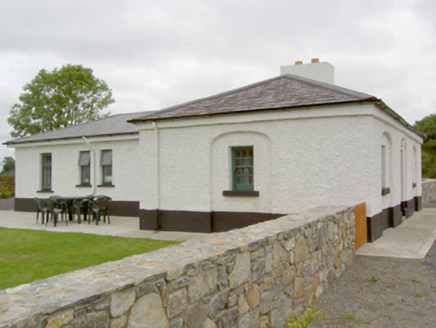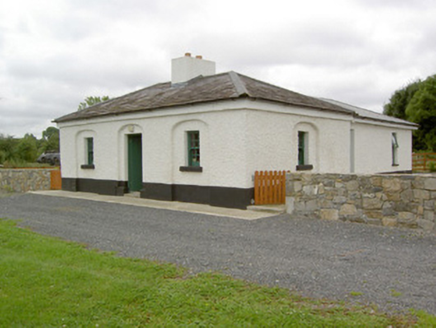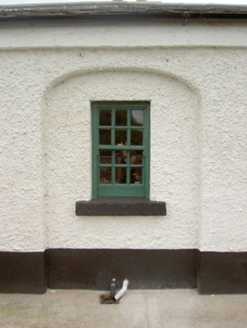Survey Data
Reg No
13313001
Rating
Regional
Categories of Special Interest
Architectural, Social
Original Use
Lock keeper's house
In Use As
House
Date
1810 - 1820
Coordinates
210892, 264617
Date Recorded
08/08/2005
Date Updated
--/--/--
Description
Detached three-bay single-storey lock keeper's house, built c. 1815, now in use as a private house, having multiple-bay single-storey extension to the rear (west). Hipped natural slate roof with central rendered chimneystack, cast-iron rainwater goods and cut stone eaves course. Painted pebbledashed walls over smooth rendered plinth. Square-headed window openings, set in recessed segmental-headed arches, with cut stone sills and six-over-six timber sliding sash windows. Central square-headed doorway to main elevation (east), set in round-headed recessed segmental-headed arch, having battened timber door. Located adjacent to lock 41 (13313003) and Coolnahinch Bridge (13313002), and to the northwest of Keenagh.
Appraisal
Though extended to the rear, this lock keeper's cottage retains its overall original form and character. The modest form of this building is enhanced by the recessed arches containing the openings, which helps to give this appealing structure a formal architectural quality. Blind recessed arches were commonly employed as architectural motifs in canal architecture, particularly in the lock keeper's houses of canal architect Thomas Omer. The quality of the construction is indicative of the grandiose ambitions of the Directors General of Inland Navigation (who took over responsibility for the Royal Canal following the dissolution of the Royal Canal Company in 1813) during the early part of the nineteenth century. Constructed by a single authority, it is not surprising that lock keeper's houses along the Royal Canal follow a standard plan. This cottage is sited alongside the Royal Canal at Coolnahinch Bridge (13313002), beside the associated 41st lock (13313003). This group of canal structures is an important reminder of the optimism and industriousness of the canal building era prior to the demise of this transport system in the mid-to-late nineteenth century.
